GOLD: Elliott Wave and Technical Analysis | Charts – February 4, 2020
A strong downwards day sees the main and alternate Elliott wave counts swapped over. Price remains within a zone of support and resistance.
Summary: A new low below 1,536.52 would indicate a high was in place on the 8th of January and a downwards trend has begun. This is now the main wave count as a strong downwards day has strongly breached a channel containing prior upwards movement.
Grand SuperCycle analysis is here.
Monthly charts were last updated here.
BEARISH ELLIOTT WAVE COUNT
WEEKLY CHART
Super Cycle wave (b) may a complete double zigzag. But it is possible that it may be incomplete and may require one final high; this is outlined now in an alternate wave count below.
The first zigzag in the double is labelled cycle wave w. The double is joined by a three in the opposite direction, a triangle labelled cycle wave x. The second zigzag in the double is labelled cycle wave y.
The purpose of the second zigzag in a double is to deepen the correction. Cycle wave y has achieved this purpose.
A new low below 1,374.91 would add strong confidence to this wave count. At that stage, the bullish Elliott wave count would be invalidated. At that stage, targets for Super Cycle wave (c) would be calculated.
A wide best fit channel is added in light blue. Copy this channel over to daily charts. The upper edge of this channel has again been overshot and now price has returned back to within the channel.
DAILY CHART
Today the main and alternate wave counts are swapped over.
It is possible that Super Cycle wave (b) may be complete and the bear market for Gold may have resumed.
A new low below 1,536.52 would invalidate the alternate bearish wave count and add some confidence in this wave count. A new low below 1,473.35 would add further confidence. Thereafter, a new low by any amount at any time frame below 1,374.91 would invalidate the bullish wave count below and add full and final confidence in this wave count. Targets for Super Cycle wave (c) would be calculated at that stage.
If Super Cycle wave (c) has begun, then it should develop a five wave structure downwards at all time frames up to and including monthly.
Minor waves 1 and 2 may be complete. Within minor wave 3, no second wave correction may move beyond the start of its first wave above 1,590.31.
HOURLY CHART
Today all hourly charts will show all movement from the low of the 14th of January.
Minor wave 2 may be a complete expanded flat correction. Within the flat, minute wave b is a 1.34 length of minute wave a, which is within the most common range of up to 1.38, and minute wave c is 3.50 longer than 2.618 the length of minute wave a.
Minute wave c will subdivide as an impulse. Within the impulse, minuette wave (ii) is an expanded flat, minuette wave (iv) is a zigzag, and minuette wave (v) is an ending contracting diagonal. All Elliott wave rules are met.
A target is calculated for minor wave 3 that expects a common Fibonacci ratio to minor wave 1.
Within minor wave 3, minute wave ii may not move beyond the start of minute wave i above 1,590.31.
ALTERNATE DAILY CHART
The double zigzag for Super Cycle wave (b) may be still incomplete.
Within cycle wave y, primary waves A and B are complete. Primary wave C must complete as a five wave structure. It is unfolding as an impulse. Within the impulse, intermediate waves (1) to (4) may now be complete.
Intermediate wave (2) was a deep 0.79 zigzag, which lasted 8 sessions. Intermediate wave (4) may have been a shallow 0.46 double zigzag lasting 4 sessions. Fourth waves are usually more brief than second waves for Gold.
Within intermediate wave (5), minor wave 2 may not move beyond the start of minor wave 1 below 1,536.52.
Drawn an Elliott channel about primary wave C and then pull the lower edge down to sit on recent lows. The lower edge may provide support to intermediate wave (5) as it continues higher. Copy this channel over to hourly charts.
The subdivisions for minor waves 1 and 2 for this alternate bearish wave count are the same as the bullish wave count below. An hourly chart is not necessary for both at this time.
BULLISH ELLIOTT WAVE COUNT
WEEKLY CHART
This wave count sees the the bear market complete at the last major low for Gold on 3 December 2015.
If Gold is in a new bull market, then it should begin with a five wave structure upwards on the weekly chart. However, the biggest problem with this wave count is the structure labelled cycle wave I because this wave count must see it as a five wave structure, but it looks more like a three wave structure.
Commodities often exhibit swift strong fifth waves that force the fourth wave corrections coming just prior and just after to be more brief and shallow than their counterpart second waves. It is unusual for a commodity to exhibit a quick second wave and a more time consuming fourth wave, and this is how cycle wave I is labelled. This wave count still suffers from this very substantial problem, which is one reason why the bearish wave count is preferred because it has a better fit in terms of Elliott wave structure.
Cycle wave II subdivides well as a double combination: zigzag – X – expanded flat.
Cycle wave III may have begun. Within cycle wave III, primary waves 1 through to 4 may now be complete. Primary wave 5 may be complete at any stage now; this would complete the whole structure of cycle wave III. Cycle wave IV may not move into cycle wave I price territory below 1,374.91.
Add the wide best fit channel to weekly and daily charts.
DAILY CHART
A target for cycle wave III is calculated also now at primary degree. If price reaches the first target and keeps rising, then the second higher target may be used.
Primary wave 5 may only subdivide as a five wave structure, most likely an impulse. Within primary wave 5, intermediate waves (1) through to (4) may now be complete.
Draw an adjusted Elliott channel about primary wave 5. Intermediate wave (5) may find support at the lower edge as it moves higher.
This wave count for the next few weeks remains essentially the same as the main bearish wave count. Both wave counts see a fourth wave complete and a fifth wave now beginning and requiring more upwards movement.
HOURLY CHART
Hourly charts are the same.
TECHNICAL ANALYSIS
WEEKLY CHART
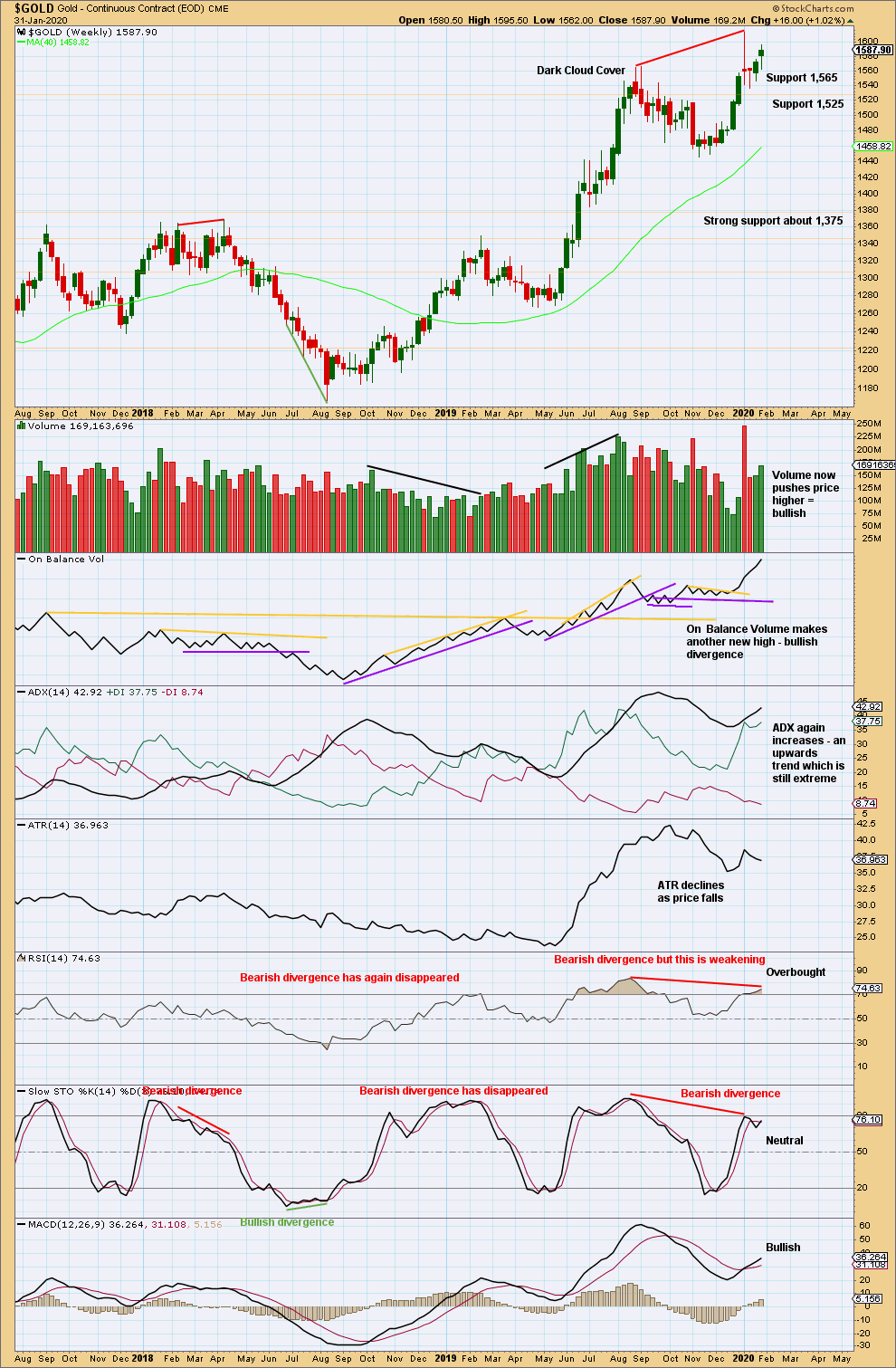
Click chart to enlarge. Chart courtesy of StockCharts.com.
Bullish divergence between price and On Balance Volume is contradicted by bearish divergence between price and RSI. More weight may be given to RSI as this tends to be slightly more reliable, particularly after it has reached extreme. This would support the alternate bearish wave count.
DAILY CHART
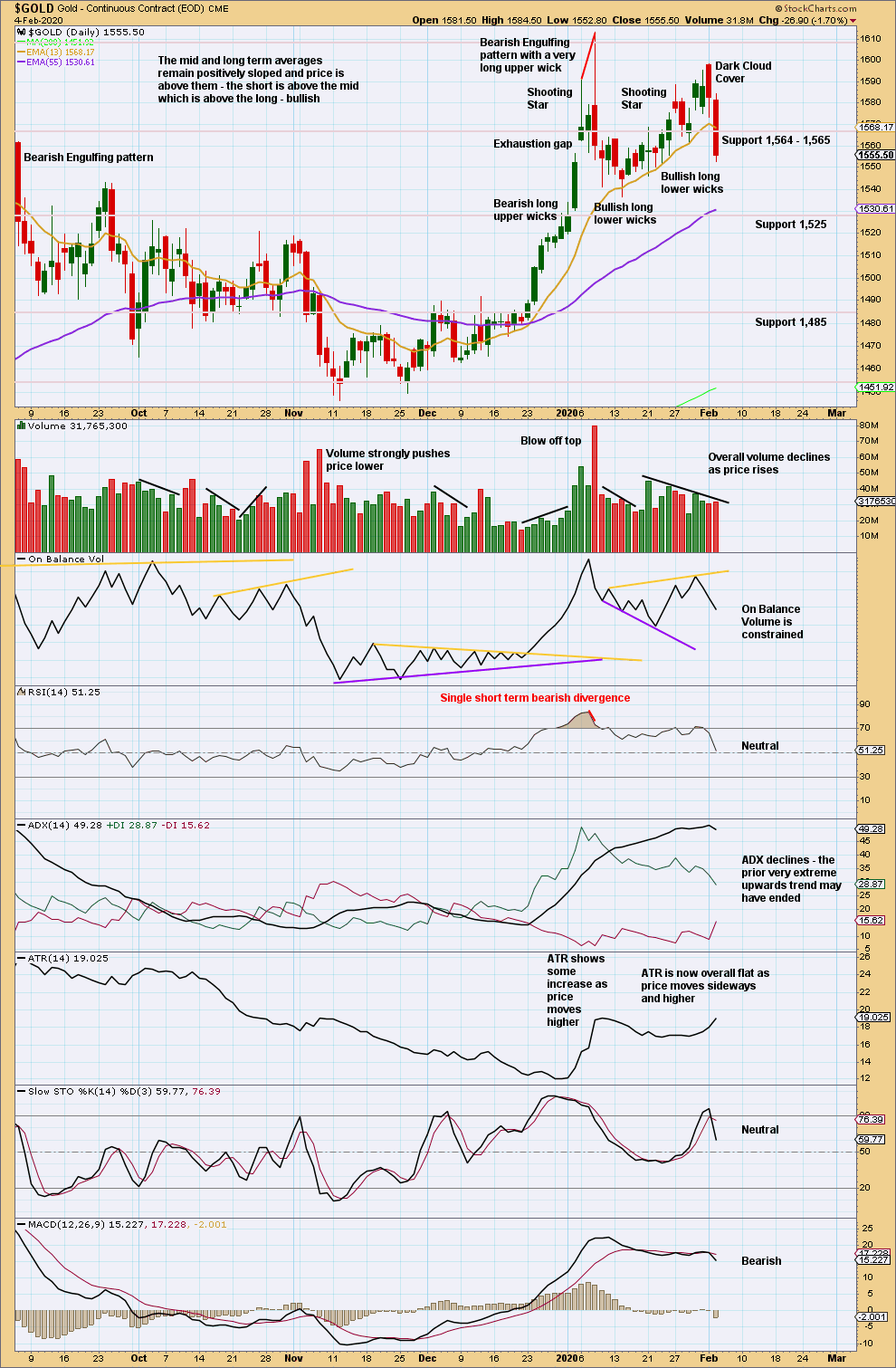
Click chart to enlarge. Chart courtesy of StockCharts.com.
The last Bearish Engulfing pattern has strong support from volume, which increases the bearish implications. Expect a trend change to either down or sideways.
Volume and On Balance Volume are bullish, but a very extreme ADX indicates upwards movement here may be limited.
A wide range day has a very slight increase in volume beyond the prior session, but overall volume still declines. The Dark Cloud bearish reversal pattern has been followed by downwards movement.
GDX WEEKLY CHART
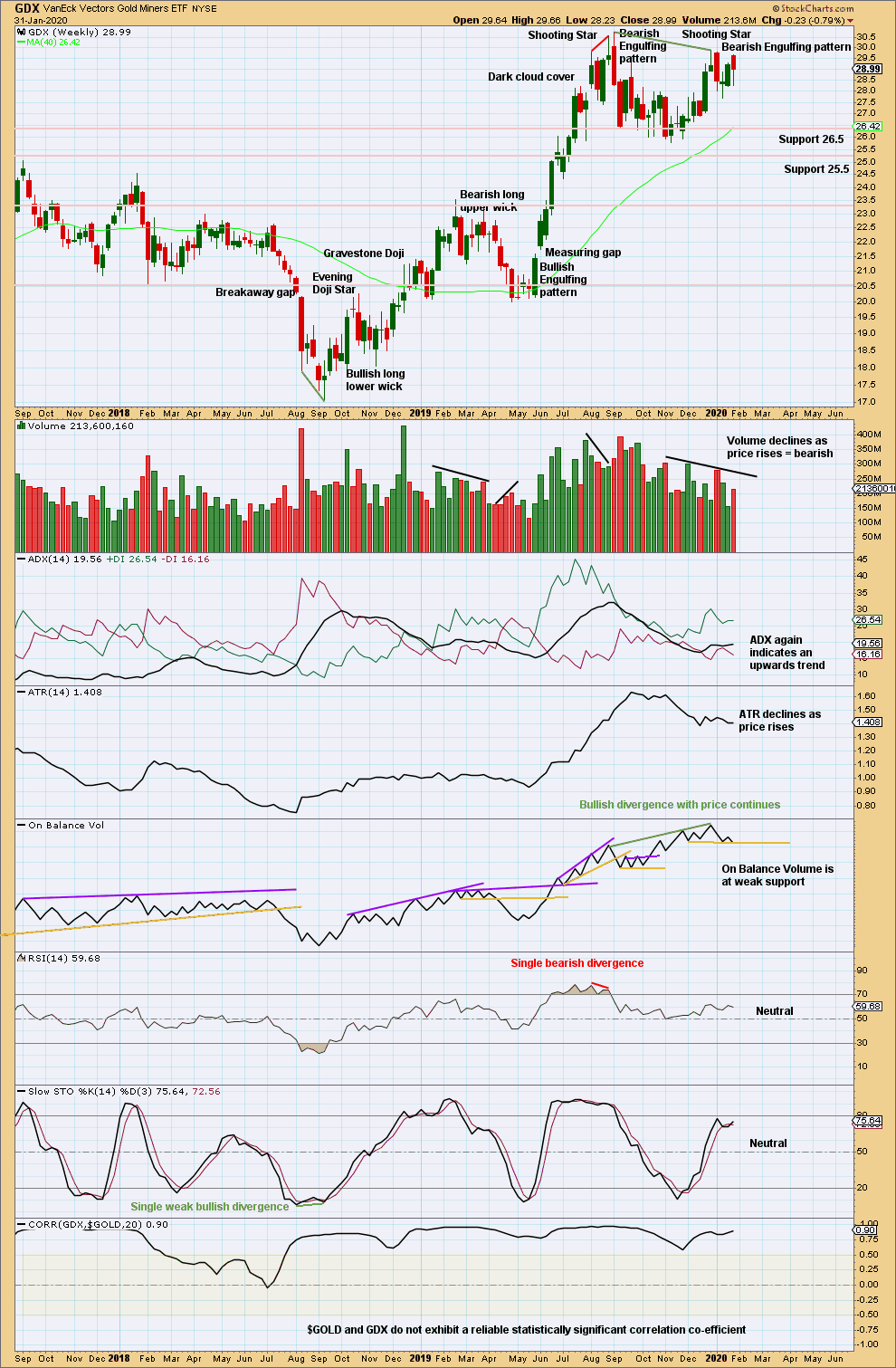
Click chart to enlarge. Chart courtesy of StockCharts.com.
Now two bearish candlestick patterns in a row, the second with support from volume, strongly suggest a trend change here to either down or sideways. The last Bearish Engulfing candlestick pattern has support from volume.
Volume and ATR are both declining as price rises from the last swing low in November 2029. This upwards movement so far has some weakness and looks likely to be a counter trend movement.
GDX DAILY CHART
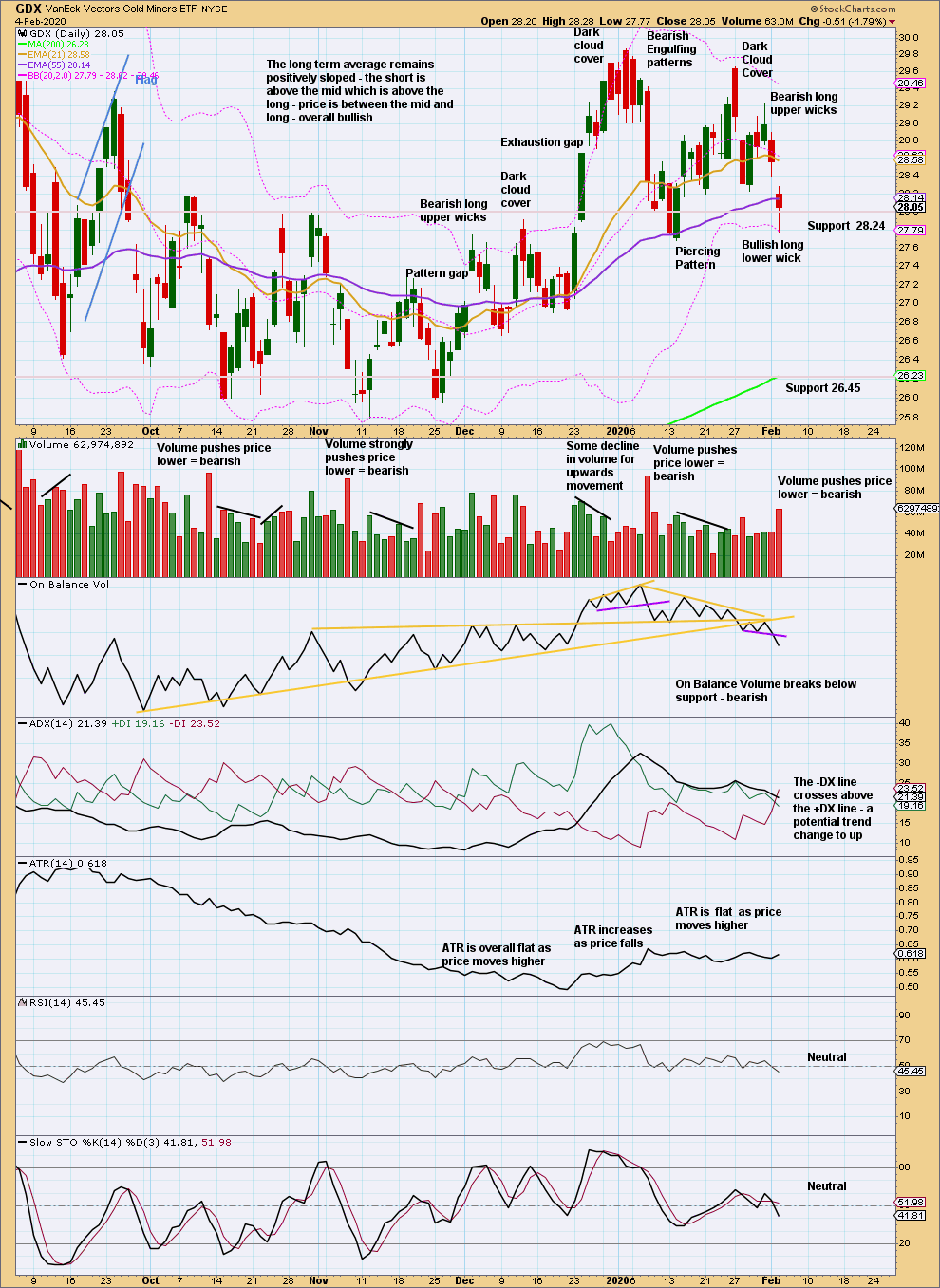
Click chart to enlarge. Chart courtesy of StockCharts.com.
A very strong bearish candlestick after an extreme upwards trend, along with closure of the last gap (now renamed an exhaustion gap) and now two bearish signals from On Balance Volume and volume supporting downwards movement and not upwards, strongly suggest GDX has found a high.
The gap today may be either a pattern gap or a breakaway gap. A breakaway gap looks more likely as volume strongly pushes price lower; more downwards movement here looks likely. The gap may offer resistance at 28.40.
Published @ 07:54 p.m. EST.
—
Careful risk management protects your trading account(s).
Follow my two Golden Rules:
1. Always trade with stops.
2. Risk only 1-5% of equity on any one trade.
—
New updates to this analysis are in bold.

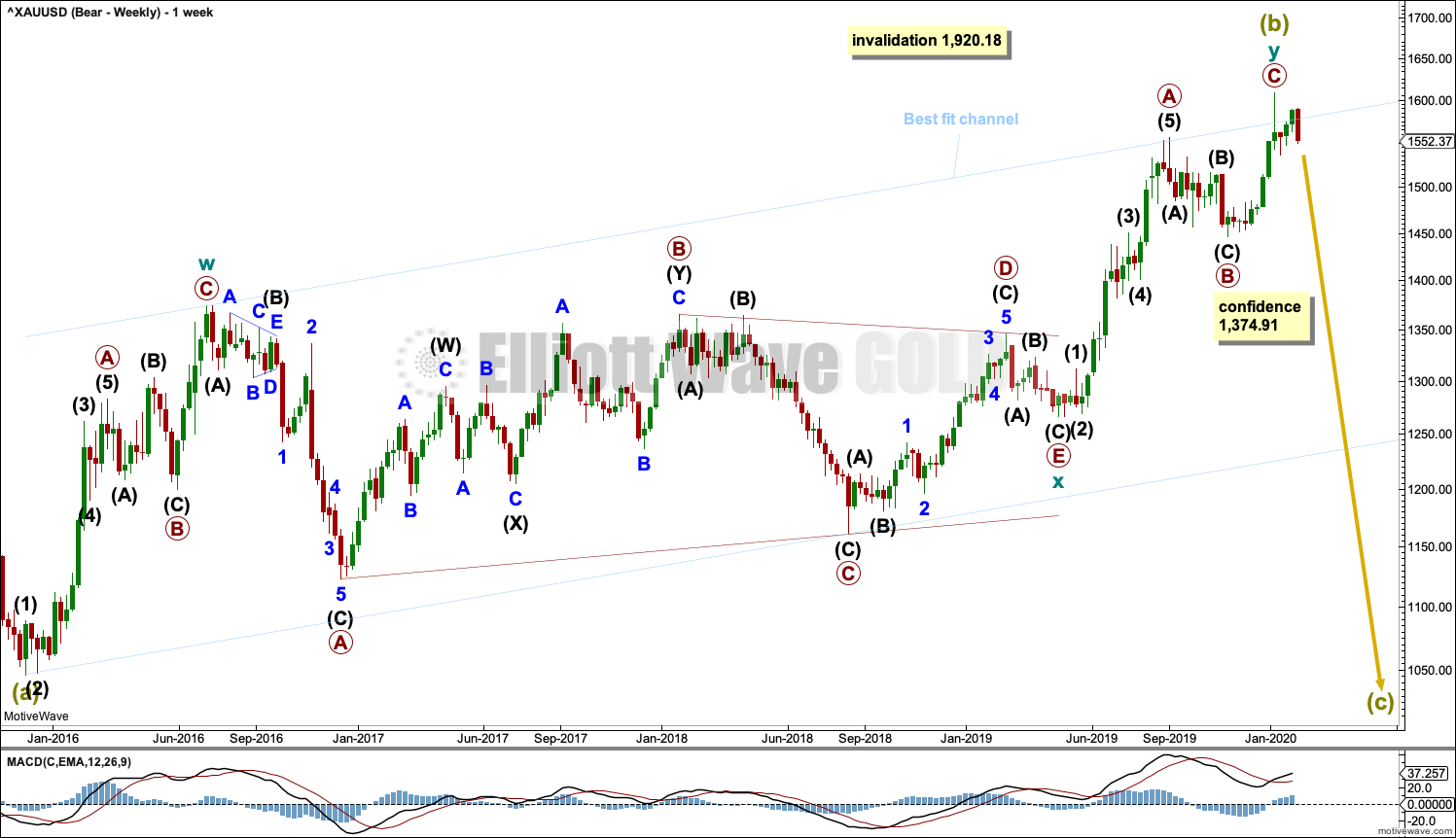
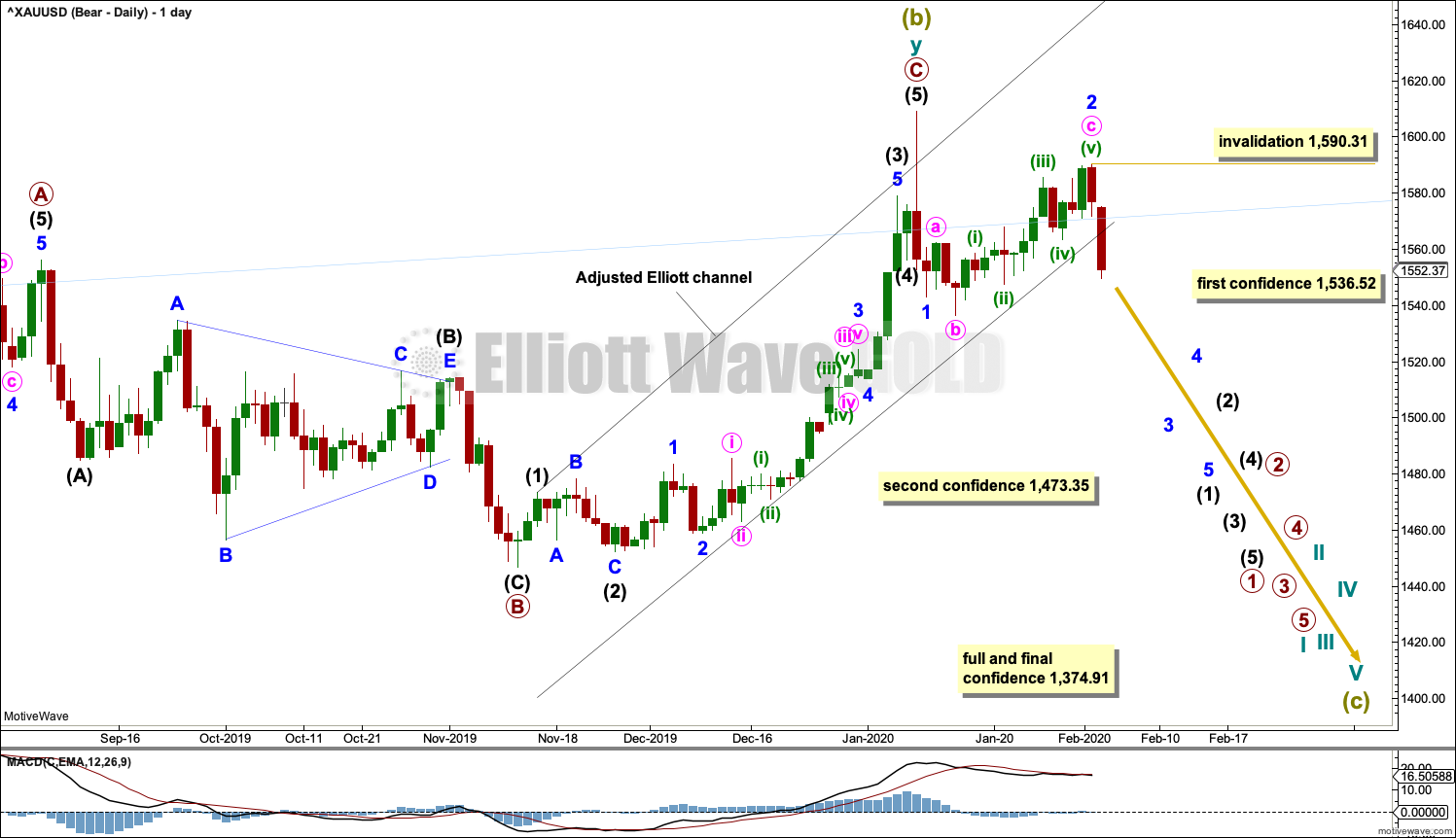
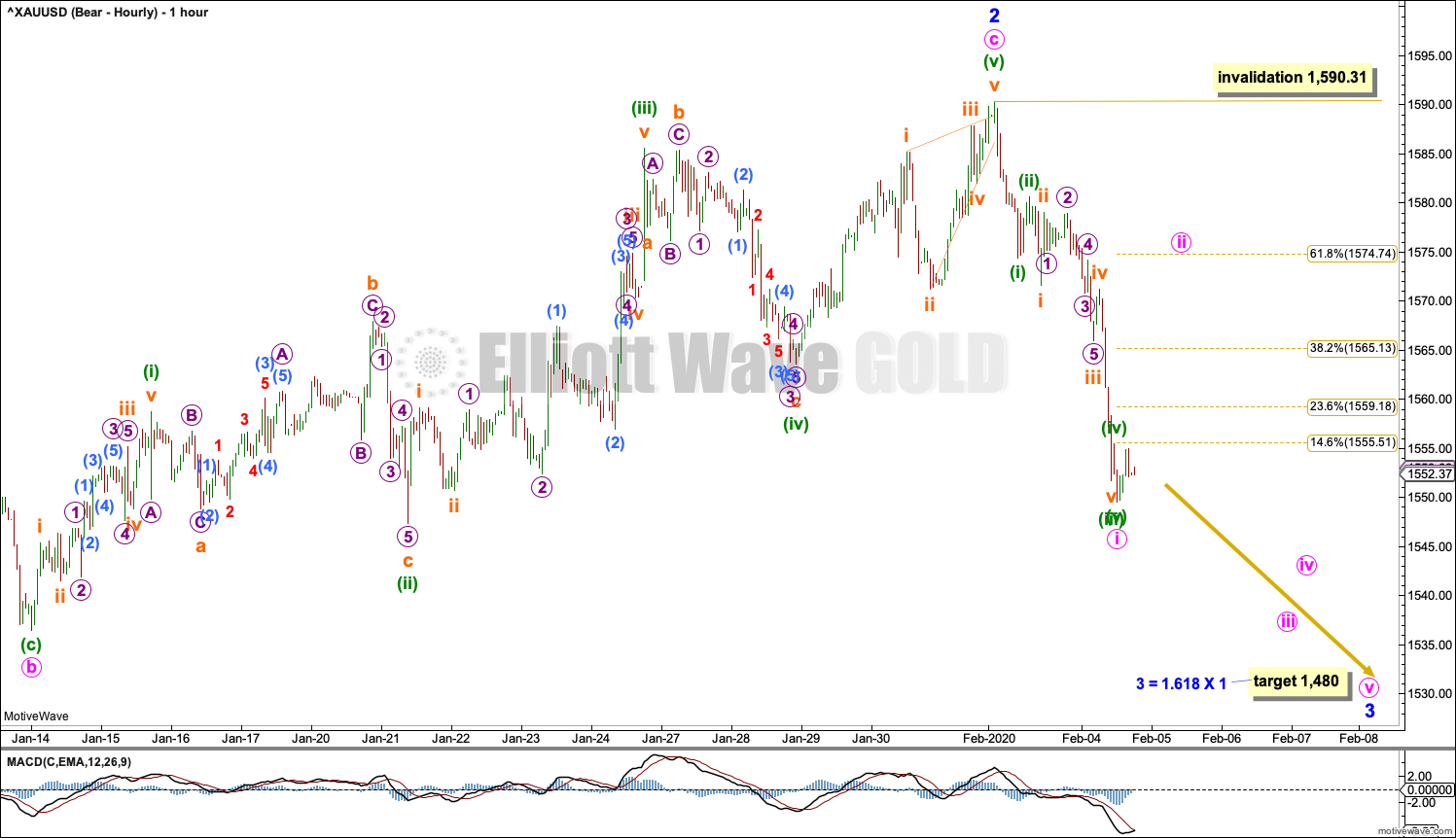
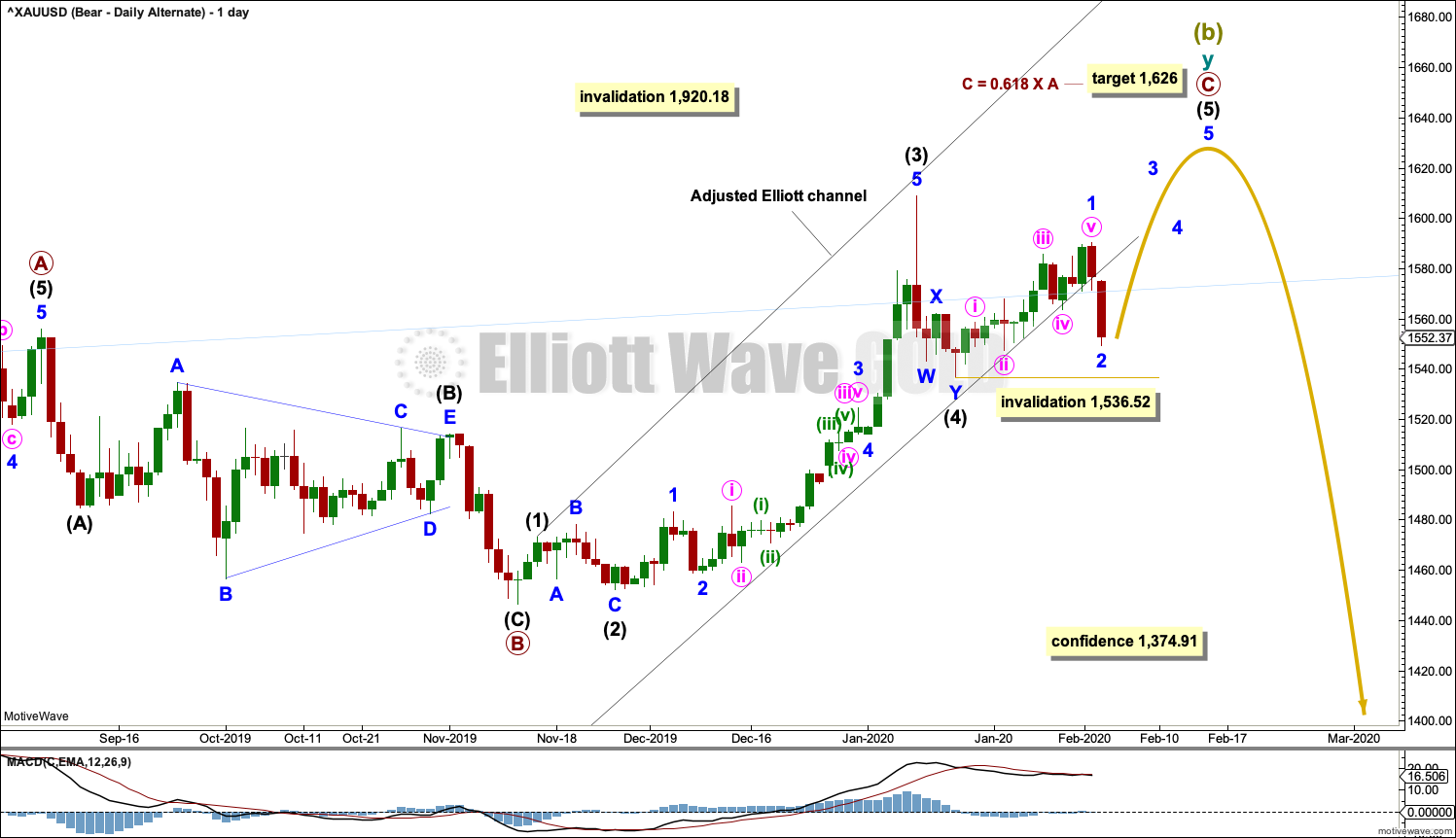
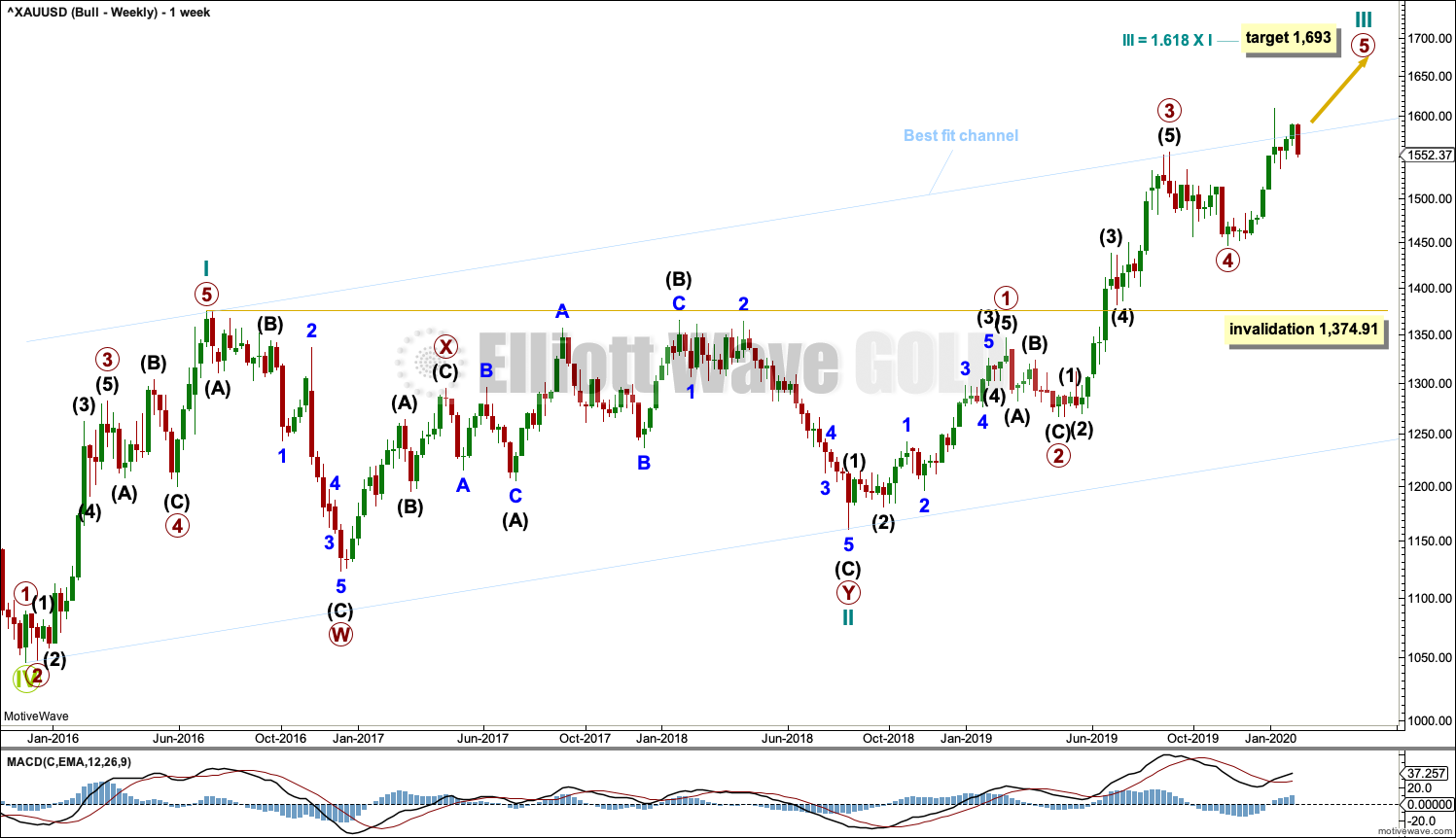
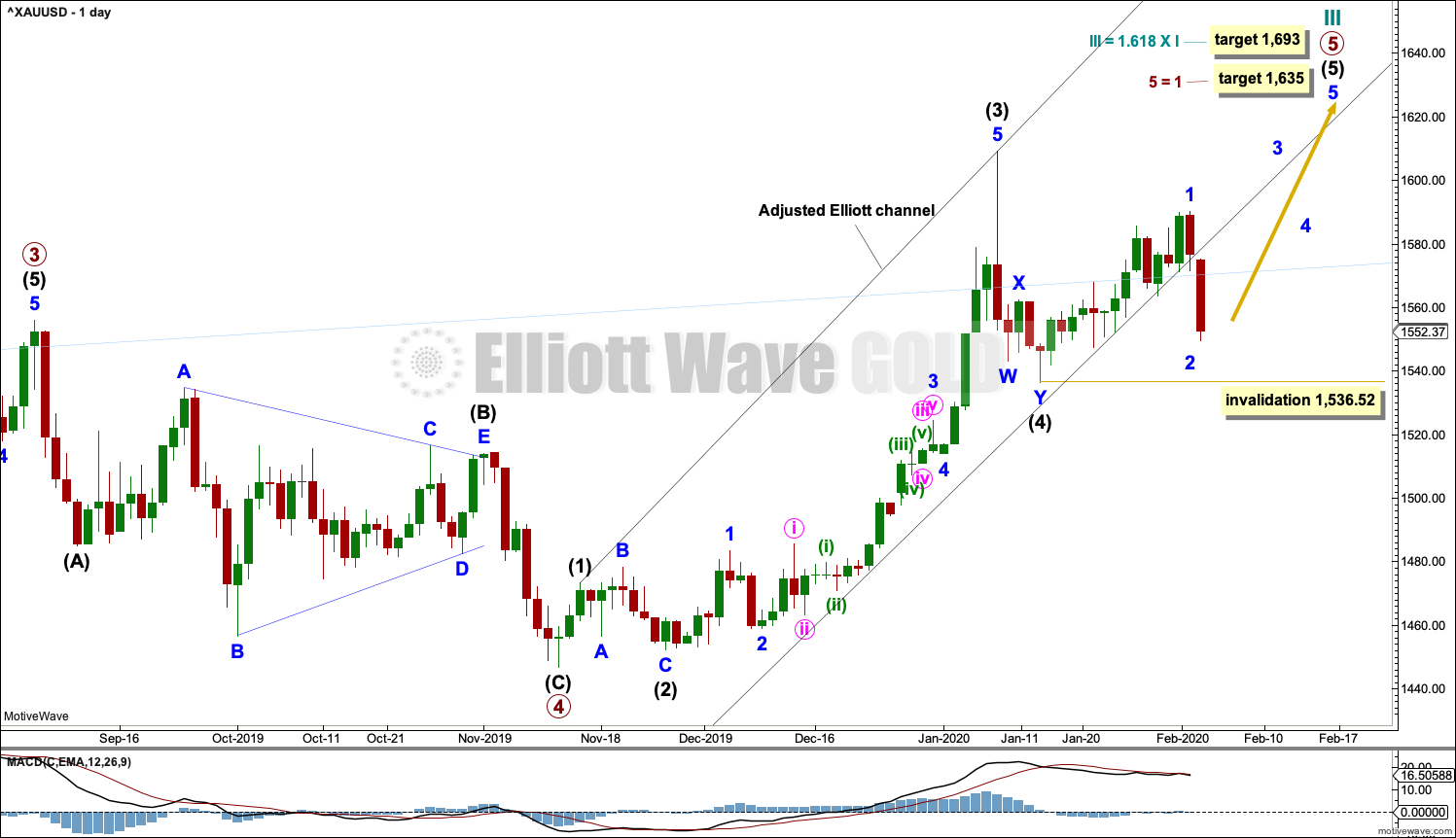
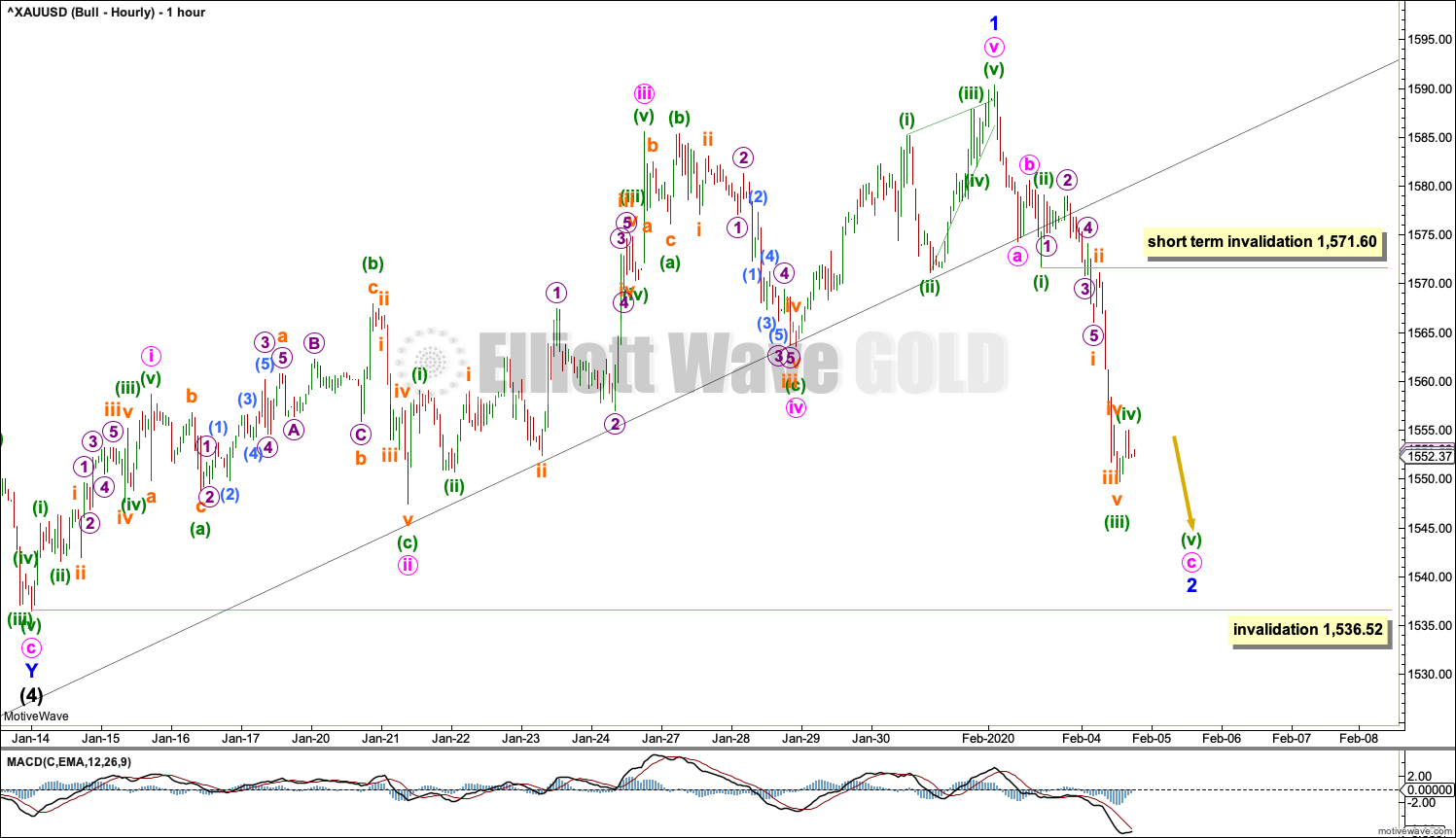
Hourly chart updated: